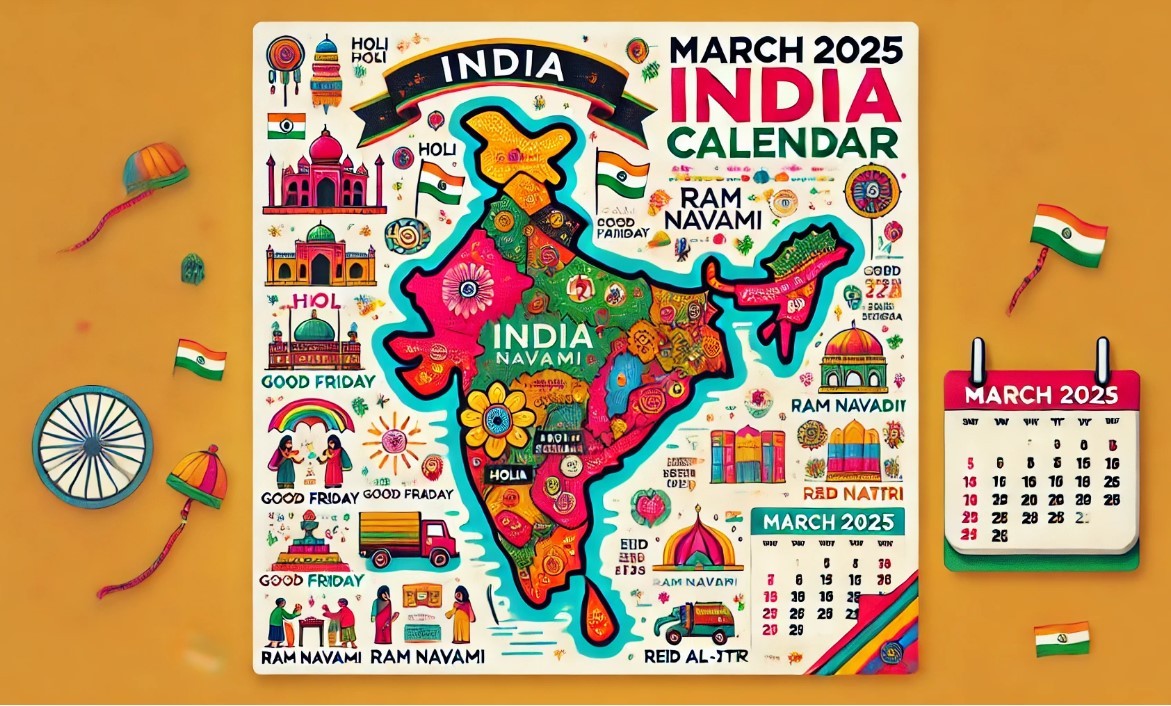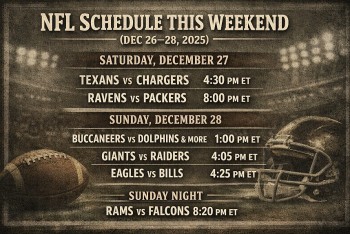Jewish Calendar in 2025: Important Dates, Holidays, Observances and Celebrations
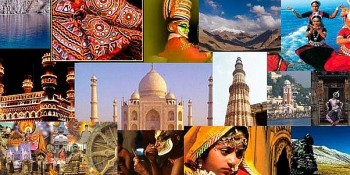 India Calendar 2025 - Full List of National/Regional Public Holidays: Dates and Celebrations India Calendar 2025 - Full List of National/Regional Public Holidays: Dates and Celebrations |
 2025 Calendar for Asian Countries with the Public Holidays 2025 Calendar for Asian Countries with the Public Holidays |
As we look ahead to 2025, the Jewish calendar is filled with significant dates, holidays, and celebrations that are essential to the Jewish community worldwide. The Jewish calendar, a lunisolar calendar, ensures that holidays are celebrated in their appropriate seasons, creating a rhythm of remembrance and celebration that connects Jews to their history, faith, and community.
The Jewish calendar serves as a cornerstone of Jewish religious and cultural life, providing a structured way to observe traditions and maintain a connection to Jewish history and heritage.
What is the Jewish Calendar and What Jewish Year in 2025?
 |
| Jewish Calendar 2025 |
The Jewish calendar is a lunisolar calendar, meaning it combines both lunar and solar elements. Months are based on the phases of the moon, but an additional month is added periodically to keep the calendar in alignment with the solar year and the agricultural seasons. This ensures that Jewish holidays fall in their proper seasons.
The Jewish year in 2025 is 5785. The Jewish calendar is a lunisolar calendar that dates back to the creation of the world as described in the Hebrew Bible. The Jewish year 5785 begins at sunset on Rosh Hashanah, which falls on September 23, 2025, and ends at nightfall on Rosh Hashanah 5786.
Key Features of the Jewish Calendar
Months: The Jewish calendar has 12 months in a regular year and 13 months in a leap year. The months are:
• Tishrei
• Cheshvan
• Kislev
• Tevet
• Shevat
• Adar (Adar I in a leap year)
• Adar II (added in leap years)
• Nisan
• Iyar
• Sivan
• Tammuz
• Av
• Elul
Leap Years: To keep the lunar and solar cycles aligned, the Jewish calendar includes a leap year approximately every three years, adding a 13th month (Adar II).
Days: Days in the Jewish calendar begin at sunset and end at the following sunset, based on the biblical account of creation in Genesis.
Holidays and Festivals: The Jewish calendar is used to determine the dates of Jewish holidays and festivals, such as Rosh Hashanah, Yom Kippur, Passover, and Hanukkah.
Top 11 Most Popular Holidays and Festivals in the Jewish Calendar 2025
In the major holidays and religious observances, no work like writing, driving, etc is permitted.
1. Rosh Hashanah (Jewish New Year)
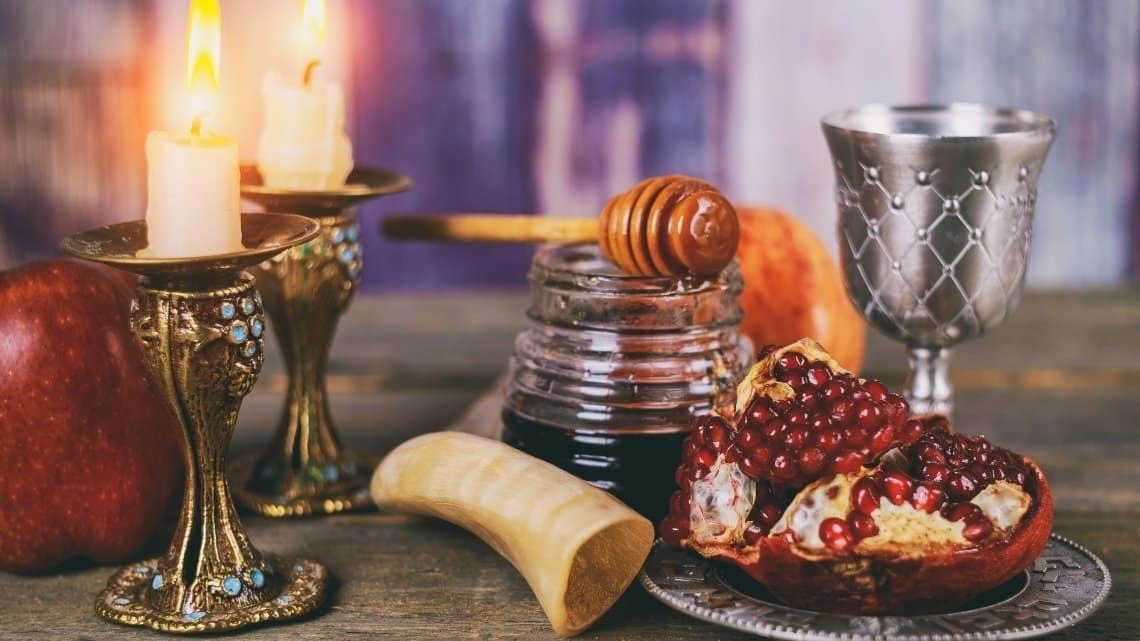 |
| Rosh Hashanah |
Date: Sunset on September 23 to nightfall on September 25, 2025
Rosh Hashanah, the Jewish New Year, marks the beginning of the Jewish calendar year. It is observed on the first two days of the Hebrew month of Tishrei, which usually falls in September or October. This holiday is a time of introspection, prayer, and repentance, as well as the beginning of the ten-day period known as the Ten Days of Repentance, culminating in Yom Kippur.
How to celebrate:
• Prayers and Services: Special prayer services are held in synagogues, including the sounding of the shofar (a ram's horn), which is a central ritual. The shofar blasts serve as a call to repentance.
• Festive Meals: Families gather for festive meals, where it is customary to eat symbolic foods. These include apples dipped in honey for a sweet new year, pomegranates to symbolize fruitfulness, and round challah bread representing the cycle of the year.
• Tashlich: Many Jews perform the Tashlich ceremony, where they go to a body of flowing water to symbolically cast away their sins by throwing pieces of bread into the water.
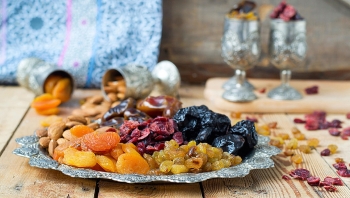 What is Tu Bishvat - Jewish New Year: Customs, Celebrations And Foods What is Tu Bishvat - Jewish New Year: Customs, Celebrations And Foods |
2. Yom Kippur (Day of Atonement)
Date: Sunset on October 2 to nightfall on October 3, 2025
Yom Kippur is the holiest day of the Jewish year. It is a day dedicated to atonement and repentance, observed on the 10th of Tishrei. The day is marked by fasting and intensive prayer, as Jews seek forgiveness for their sins and resolve to improve in the coming year.
How to celebrate:
Fasting: Jews abstain from food and drink for 25 hours, from sunset on the eve of Yom Kippur to nightfall the next day.
Prayer Services: Extensive prayer services are held in synagogues, including the Kol Nidre service on the eve of Yom Kippur and the Ne'ilah service at the end of the day. The prayers focus on confession and seeking God's forgiveness.
Wearing White: Many wear white clothing to symbolize purity and repentance.
Prohibitions: Besides fasting, other prohibitions include refraining from bathing, wearing leather shoes, and engaging in marital relations.
3. Sukkot (Feast of Tabernacles)
Date: Sunset on October 7 to nightfall on October 14, 2025
Sukkot is a seven-day festival (eight days outside of Israel) that celebrates the fall harvest and commemorates the Israelites' 40 years of wandering in the desert. It begins on the 15th of Tishrei and is followed by Shemini Atzeret and Simchat Torah.
How to celebrate:
Building a Sukkah: Jews build and dwell in a sukkah, a temporary hut with a roof made of branches. The sukkah serves as a reminder of the fragile dwellings of the Israelites in the desert.
Four Species (Arba Minim): Observance includes waving the Four Species – a lulav (palm branch), etrog (citron), hadassim (myrtle branches), and aravot (willow branches) – in all six directions to acknowledge God's presence everywhere.
Festive Meals: Meals are eaten in the sukkah, and it is a time of joy and celebration with family and friends.
Hoshanot: Special prayers called Hoshanot are recited, and processions are made around the synagogue with the Four Species.
4. Simchat Torah (Rejoicing of the Torah)
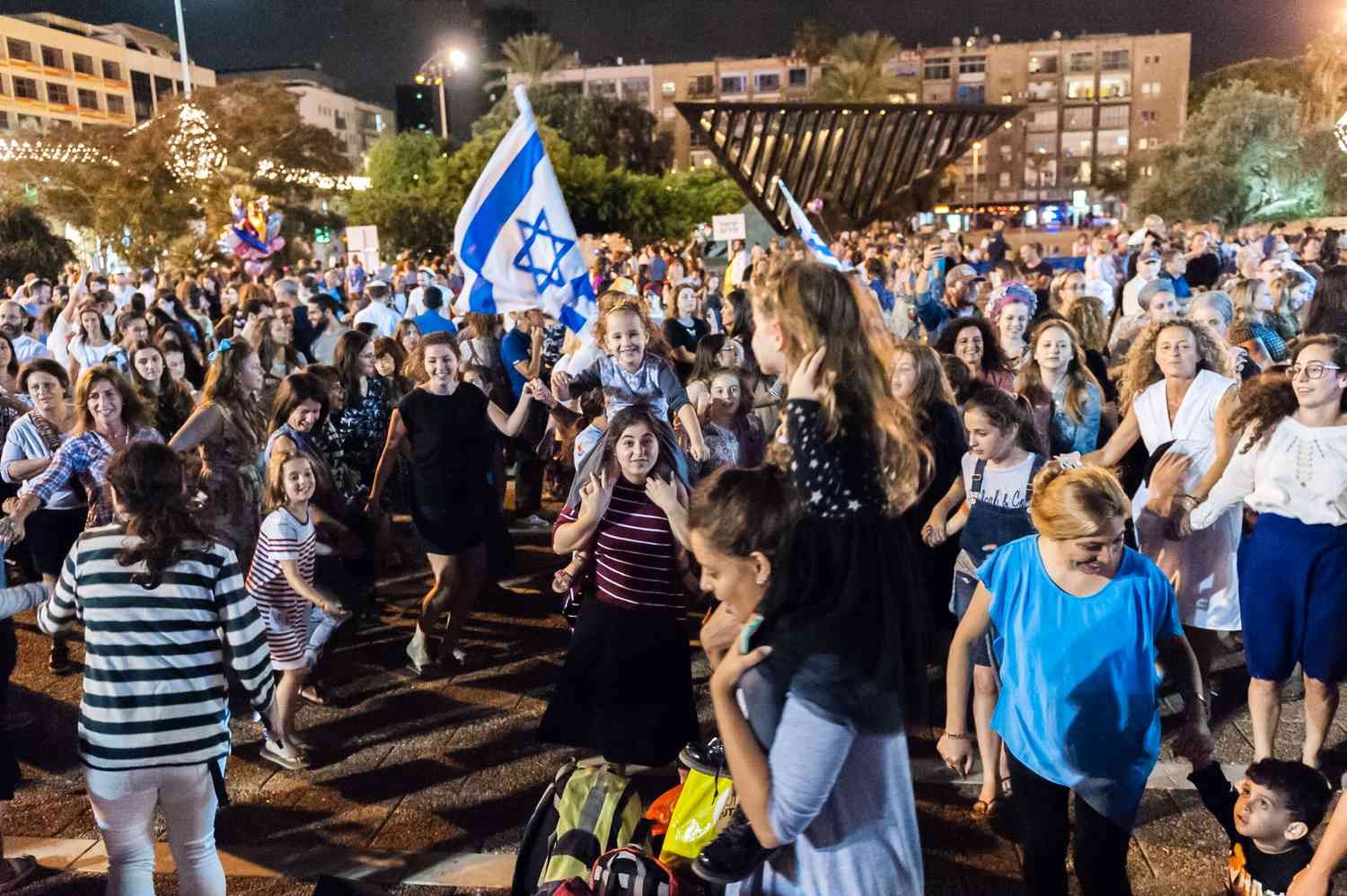 |
| Simchat Torah |
Date: Sunset on October 15 to nightfall on October 16, 2025
Simchat Torah marks the completion and immediate restarting of the annual cycle of Torah readings. It falls immediately after Shemini Atzeret, at the end of Sukkot.
How to celebrate:
• Torah Readings: The final portion of the Torah (Deuteronomy) is read, followed by the first portion (Genesis), symbolizing the continuous cycle of Torah study.
• Dancing and Singing: Congregants take the Torah scrolls from the ark and dance joyously around the synagogue in seven circuits known as hakafot. This celebration is accompanied by singing and dancing.
• Festive Meals: The day is marked by joyous meals and celebrations with the community.
5. Hanukkah (Festival of Lights)
Date: Sunset on December 16 to nightfall on December 24, 2025
Hanukkah commemorates the rededication of the Second Temple in Jerusalem after its defilement by the Seleucid Greeks. The holiday celebrates the miracle of the oil that lasted for eight days when there was only enough to last for one.
How to celebrate:
• Lighting the Menorah: Each night for eight nights, one additional candle is lit on the menorah, using the shamash (helper candle) until all eight candles are lit. The menorah is placed in a window or doorway to publicize the miracle.
• Prayers and Songs: Special prayers, including Hallel and Al HaNissim, are recited, and traditional songs like "Maoz Tzur" are sung.
• Dreidel Game: A spinning top game is played, where each side of the dreidel is marked with a Hebrew letter representing the phrase "A great miracle happened there" (or "here" in Israel).
• Foods: Foods fried in oil, such as latkes (potato pancakes) and sufganiyot (jelly-filled doughnuts), are eaten to commemorate the miracle of the oil.
• Gifts and Charity: It is customary to give and receive gifts, and to give charity (tzedakah).
Learn More: Happy Hanukkah - Jewish Holiday: Meaning, History and Celebration
6. Passover (Pesach)
Date: Sunset on April 12 to nightfall on April 20, 2025
Passover commemorates the Exodus of the Israelites from slavery in Egypt. It is celebrated for seven days in Israel and eight days in the Diaspora, starting on the 15th of Nisan.
How to celebrate:
• Seder Meal: The holiday begins with the Seder, a ritual meal held on the first two nights (or first night in Israel). The Seder includes reading the Haggadah, which tells the story of the Exodus, and eating symbolic foods.
• Matzah: During Passover, leavened bread is avoided, and matzah (unleavened bread) is eaten to remember the haste with which the Israelites left Egypt.
• Maror: Bitter herbs are eaten to symbolize the bitterness of slavery.
• Four Cups of Wine: Four cups of wine are drunk at the Seder to represent the four expressions of redemption promised by God.
• Retelling the Exodus: The Haggadah guides participants through the retelling of the Exodus story, including questions, songs, and rituals designed to engage everyone, especially children.
7. Shavuot (Feast of Weeks)
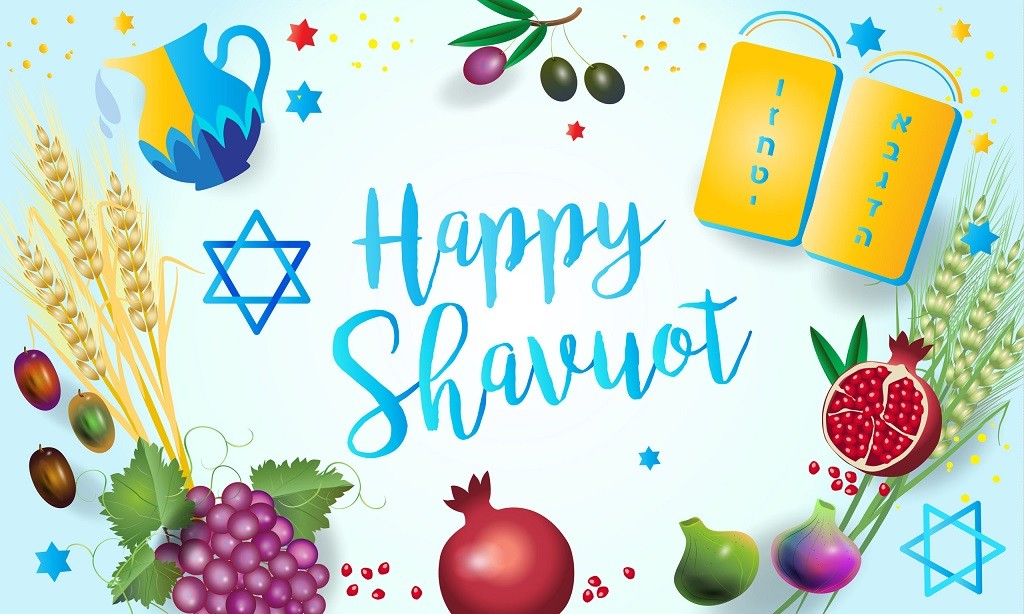 |
| Shavuot |
Date: Sunset on June 1 to nightfall on June 3, 2025
Shavuot, which means "weeks" in Hebrew, is celebrated seven weeks after Passover. It commemorates the giving of the Torah to the Israelites at Mount Sinai. It also marks the conclusion of the counting of the Omer, a 49-day period between Passover and Shavuot.
How to celebrate:
• Torah Study: It is traditional to engage in all-night Torah study (Tikkun Leil Shavuot) to commemorate the giving of the Torah.
• Reading the Book of Ruth: The Book of Ruth is read during synagogue services, highlighting themes of loyalty, conversion, and harvest.
• Dairy Foods: Dairy foods, such as cheesecake and blintzes, are traditionally eaten. This custom has various explanations, including the idea that the Israelites had not yet received the laws of kashrut (kosher laws) and thus initially consumed simple dairy meals.
• Decorations: Synagogues and homes are often decorated with greenery and flowers, symbolizing the harvest and the tradition that Mount Sinai blossomed with flowers when the Torah was given.
8. Purim
Date: Sunset on March 14 to nightfall on March 15, 2025
Purim commemorates the saving of the Jewish people from Haman's plot to destroy them, as recorded in the Book of Esther. It is celebrated on the 14th day of the Hebrew month of Adar.
How to celebrate:
• Reading the Megillah: The Book of Esther (Megillah) is read twice, once in the evening and once in the morning, with noise-making (using groggers) whenever Haman's name is mentioned.
• Costumes: It is customary to wear costumes and masks, symbolizing the hidden nature of the miracle.
• Mishloach Manot: Gifts of food and drink are sent to friends and family.
• Matanot La’Evyonim: Charity is given to the poor, ensuring that everyone can participate in the Purim festivities.
• Festive Meal: A festive meal (Seudat Purim) is enjoyed, often including wine and other alcoholic beverages.
• Hamantaschen: Triangular pastries filled with poppy seeds, fruit preserves, or chocolate, representing Haman’s hat or ears, are traditionally eaten.
9. Tish’a B’Av
Date: Sunset on to nightfall on 3 August, 2025
Tish'a B'Av is a day of mourning commemorating the destruction of both the First and Second Temples in Jerusalem. It is observed on the ninth day of the Hebrew month of Av.
How to celebrate:
• Fasting: A 25-hour fast is observed, beginning at sunset on the eve of Tish’a B’Av and ending at nightfall the next day.
• Mourning Practices: Activities associated with joy are avoided. This includes not bathing, not wearing leather shoes, and refraining from marital relations.
• Reading the Book of Lamentations: The Book of Lamentations (Eicha) is read in the synagogue, reflecting on the destruction and expressing sorrow.
• Kinnot: Additional dirges (kinnot) are recited, lamenting various tragedies in Jewish history.
• Sitting on the Floor: During the evening service, it is customary to sit on low stools or the floor to symbolize mourning.
10. Shemini Atzeret
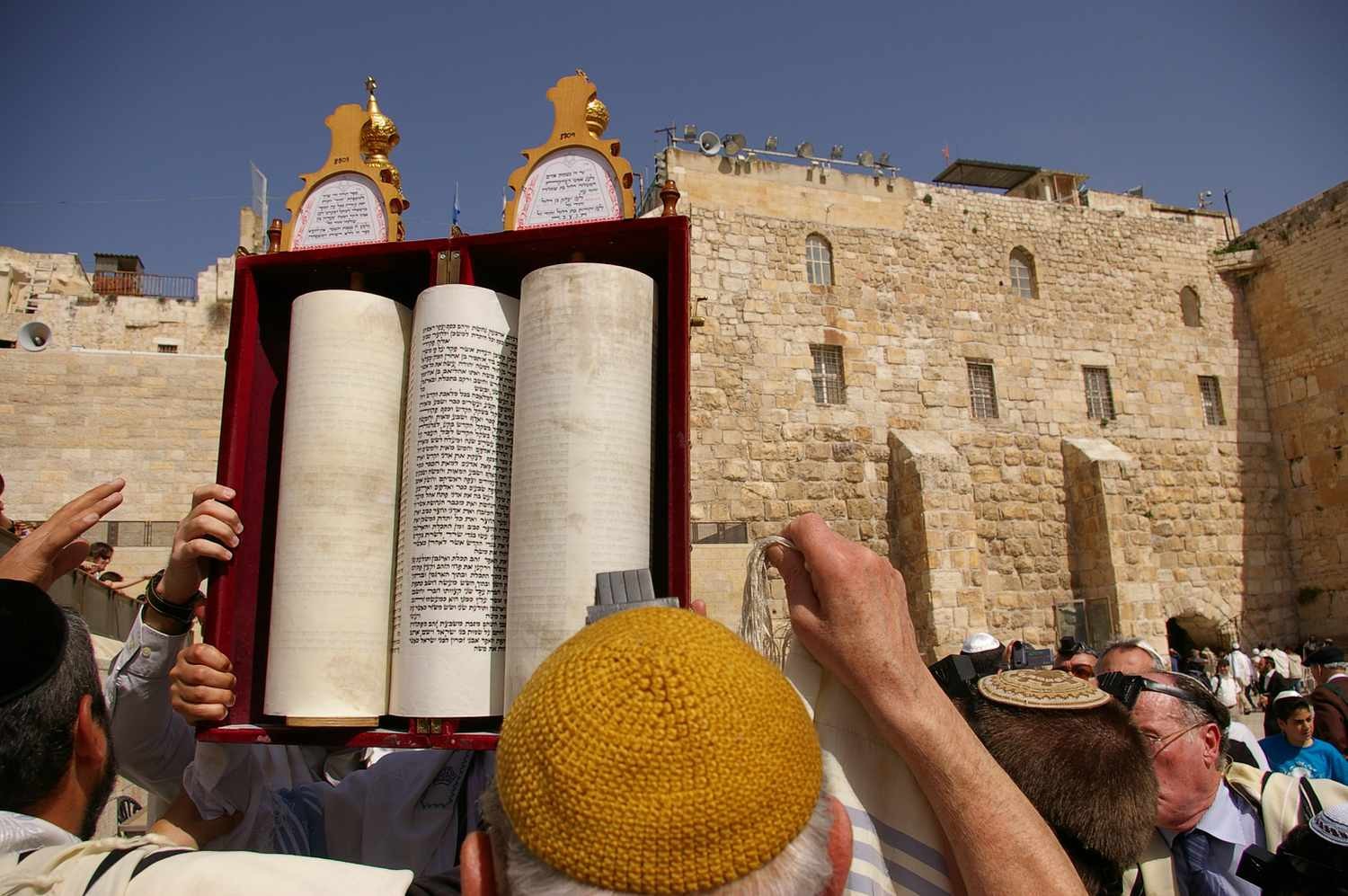 |
| Shemini Atzeret |
Date: Sunset on 13 October to nightfall on 14 October, 2025
Shemini Atzeret is observed on the day following the seven-day festival of Sukkot. It is a separate holiday that serves as a conclusion to Sukkot and a day of assembly and reflection. In Israel, it is celebrated on the same day as Simchat Torah.
How to celebrate:
• Prayer for Rain: A special prayer for rain (Geshem) is recited, marking the beginning of the rainy season in Israel.
• Festive Meals: Festive meals are enjoyed, and some customs include continuing to eat in the sukkah, though without the blessings specific to Sukkot.
• Simchat Torah (outside Israel): In the Diaspora, Simchat Torah is celebrated on the second day of Shemini Atzeret, with joyful processions and dancing with the Torah scrolls.
11. Chanukah
Date: Sunset on 14 December to nightfall on 22 December, 2025
Hanukkah, also spelled Chanukah, celebrates the rededication of the Second Temple in Jerusalem after its defilement by the Seleucid Greeks. It commemorates the miracle of the oil that lasted eight days despite there being only enough oil for one day.
How to celebrate:
• Lighting the Menorah: Each night for eight nights, an additional candle is lit on the menorah, starting with one candle and adding another each night, using the shamash (helper candle). The menorah is placed in a window or doorway to publicize the miracle.
• Prayers and Songs: Special prayers, including Hallel and Al HaNissim, are recited, and traditional songs like "Maoz Tzur" are sung.
• Dreidel Game: A spinning top game is played, where each side of the dreidel is marked with a Hebrew letter representing the phrase "A great miracle happened there" (or "here" in Israel).
• Foods: Foods fried in oil, such as latkes (potato pancakes) and sufganiyot (jelly-filled doughnuts), are eaten to commemorate the miracle of the oil.
• Gifts and Charity: It is customary to give and receive gifts, and to give charity (tzedakah).
More Holidays and Observances in the Jewish Calendar 2025
1. Tu Bishvat (New Year for Trees)
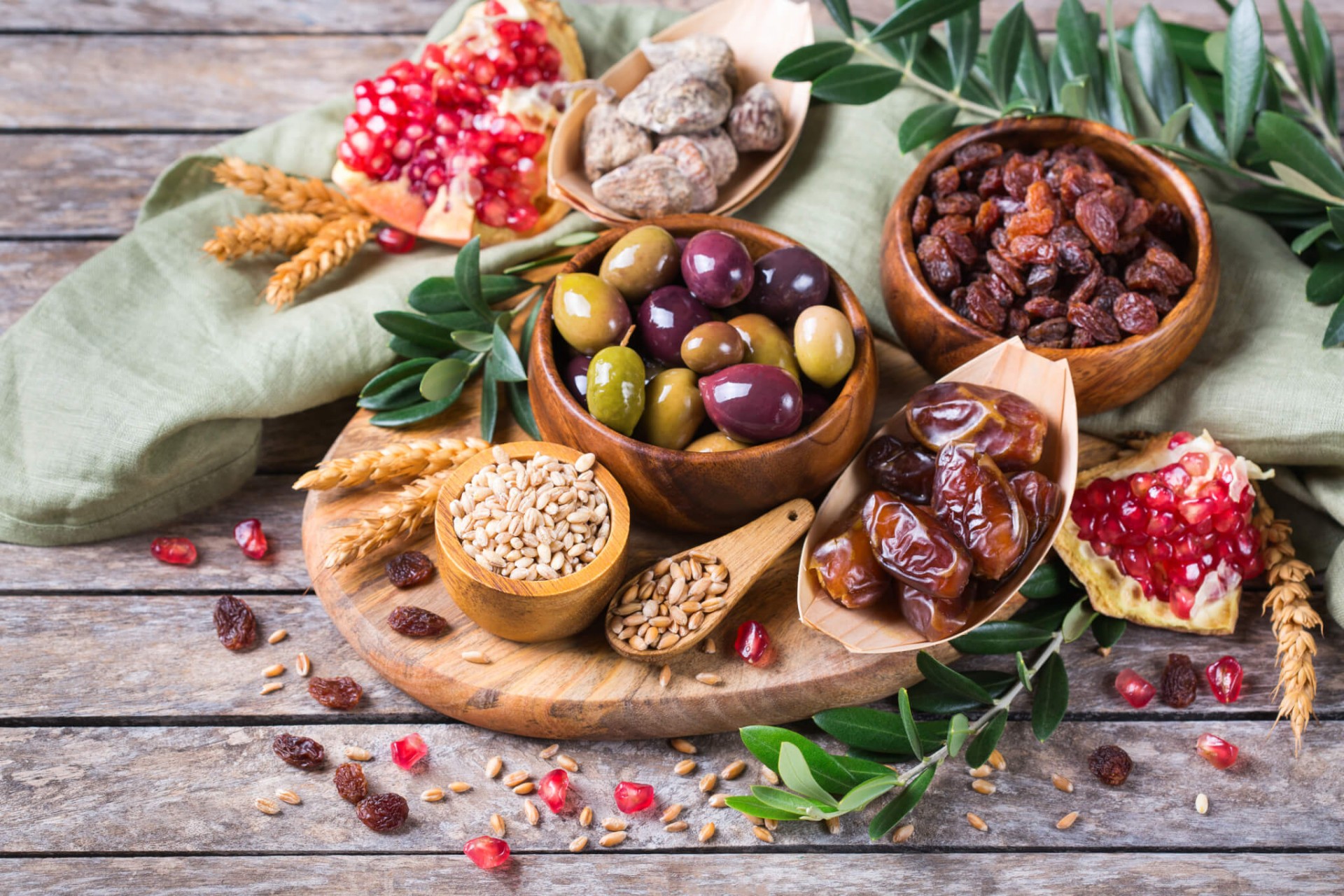 |
| Tu Bishvat |
Date: Sunset on February 12 to nightfall on February 13, 2025
Tu Bishvat, the 15th of the Hebrew month of Shevat, is known as the "New Year for Trees." It is a minor Jewish holiday that marks the beginning of the agricultural cycle for the trees in Israel.
How to celebrate:
- Planting Trees: Many communities plant trees in Israel and around the world to celebrate and support reforestation.
- Seder: Some people conduct a Tu Bishvat Seder, similar to the Passover Seder, involving the consumption of various fruits and nuts, particularly those associated with Israel, such as figs, dates, pomegranates, olives, and grapes.
- Environmental Awareness: The holiday is often used to promote ecological awareness and responsibility.
Read More: What is Tu Bishvat - Jewish New Year: Customs, Celebrations And Foods
2. Shushan Purim
Date: Sunset on 14 March to nightfall on 15 March, 2025
Shushan Purim is observed on the 15th of Adar, the day after Purim, in cities that were walled at the time of Joshua, including Jerusalem. It commemorates the extra day of celebration in the Persian capital of Shushan as described in the Book of Esther.
How to celebrate:
- Reading the Megillah: The Megillah (Book of Esther) is read, similar to Purim, but with emphasis on the fact that Jews in walled cities continued the celebration an extra day.
- Festivities: Similar customs as Purim, including festive meals, giving gifts, and charity, but specifically observed in Jerusalem and other historically walled cities.
3. Purim Meshulash
Date: Sunset on 15 March to nightfall on 16 March, 2025
Purim Meshulash (Triple Purim) occurs when Purim falls on a Friday. In Jerusalem and other walled cities, the celebration is extended over three days to accommodate the Sabbath.
How to celebrate:
- Thursday: The Fast of Esther is observed.
- Friday: The Megillah is read, and gifts of food are distributed.
- Shabbat: Special Purim prayers are added to the Shabbat services.
- Sunday: The festive Purim meal and other customs, such as giving charity, are observed.
4. Days of the Omer
Date: Sunset on 13 April to nightfall on 1 June, 2025
The Omer is a 49-day period between the second day of Passover and the holiday of Shavuot. This period commemorates the counting of the omer, a measure of barley, and the anticipation of receiving the Torah at Sinai.
How to celebrate:
- Counting the Omer: Each night, a blessing is recited, and the day of the Omer is counted.
- Semi-Mourning Practices: Many Jews observe semi-mourning customs during this period, refraining from weddings, haircuts, and music, in memory of the students of Rabbi Akiva who died in a plague.
- Lag BaOmer: The 33rd day of the Omer is celebrated as a break in the mourning period, often with bonfires, weddings, and other festivities.
5. Pesach Sheni
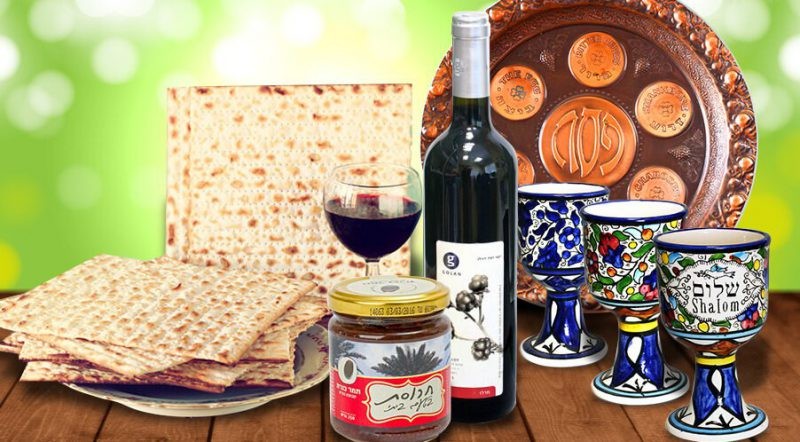 |
| Pesach Sheni |
Date: Sunset on 11 May to nightfall on 12 May, 2025
Pesach Sheni, the 14th of Iyar, is a "second Passover" for those who were unable to bring the Passover sacrifice at the correct time due to impurity or distance from the Temple.
How to celebrate:
- Eating Matzah: It is customary to eat matzah on this day, though there are no additional specific rituals or prohibitions.
- Symbolic Inclusion: Some observe this day as a reminder of second chances and inclusivity in Jewish practice.
6. Lag BaOmer
Date: Sunset May 15, 2025 - Evening May 16, 2025
Lag BaOmer, the 33rd day of the Omer counting, marks the end of a plague that struck Rabbi Akiva's students and the death of Rabbi Shimon bar Yochai, a Mishnaic sage and mystic.
How to celebrate:
- Bonfires: Bonfires are lit to symbolize the light of Torah and mysticism.
- Parades and Outings: Many communities organize outdoor activities, parades, and outings.
- Weddings and Haircuts: Since it is a break in the semi-mourning period, weddings and haircuts often take place on this day.
7. Tu B’Av
Date: Sunset on 8 August to nightfall on 9 August, 2025
Tu B'Av, the 15th of Av, is a minor holiday of love and matchmaking, historically marking the end of the grape harvest.
How to celebrate:
• Dancing and Singing: In ancient times, unmarried women would dress in white and dance in the vineyards, hoping to find a match.
• Weddings: It is considered an auspicious day for weddings and romantic commitments.
• Festive Meals: Families and friends gather for festive meals and celebrations.
8. Rosh Hashana LaBehemot
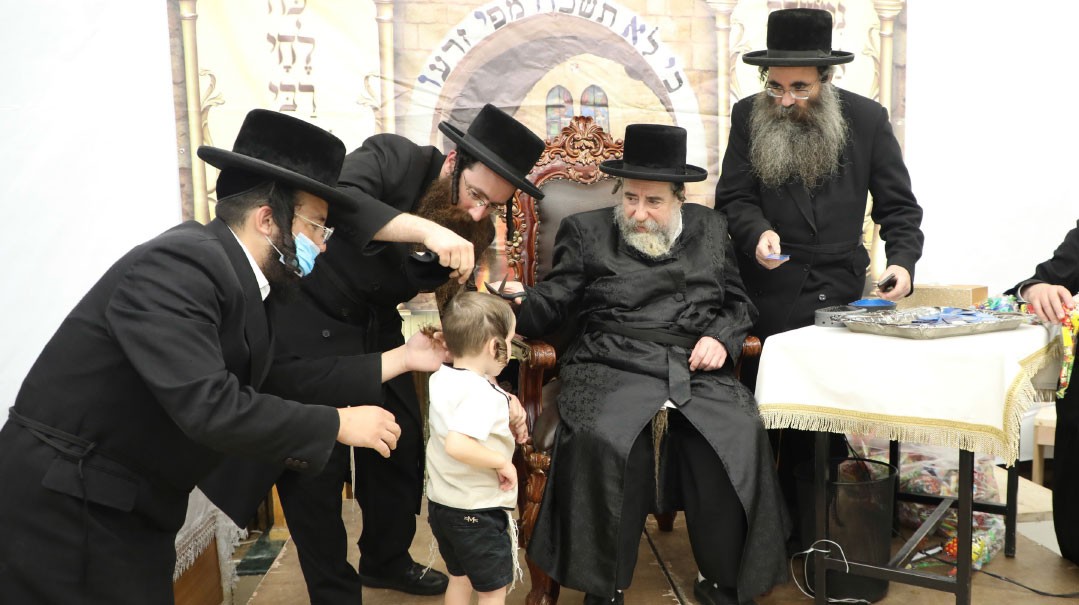 |
| Rosh Hashana LaBehemot |
Date: Sunset on 24 August to nightfall on 25 August, 2025
Rosh Hashana LaBehemot, the New Year for Domestic Animals, is observed on the first of Elul. It marks the beginning of the agricultural year for tithing animals in ancient Israel.
How to celebrate:
• Animal Care: Focus on the care and welfare of animals, reflecting on their importance in Jewish life and agriculture.
• Environmental Awareness: Some communities use this day to raise awareness about animal rights and environmental issues.
9. Leil Selichot
Date: Sunset on 13 September after nightfall
Leil Selichot is the night (or early morning) preceding the recitation of Selichot, special penitential prayers recited in preparation for the High Holy Days. It usually occurs on the Saturday night before Rosh Hashanah.
How to celebrate:
• Selichot Services: Special Selichot services are held, often starting at midnight, featuring prayers and poems asking for forgiveness.
• Reflection and Repentance: It is a time for introspection, reflection, and spiritual preparation for Rosh Hashanah and Yom Kippur.
10. Chag HaBanot
Date: Sunset on 19 December to nightfall on 29 December, 2025
Chag HaBanot, or the Festival of the Daughters, is a lesser-known Sephardic Jewish holiday celebrated on the 1st of Tevet, during Hanukkah. It honors Jewish women and their contributions to Jewish life and history.
How to celebrate:
• Special Meals: Families gather for festive meals, often prepared by the women of the household.
• Storytelling: Stories of notable Jewish women, both historical and contemporary, are shared.
• Gifts and Blessings: Mothers and daughters exchange gifts and blessings, emphasizing the importance of female heritage and education in Judaism.
Modern Holidays in the Jewish Calendar 2025
1. Hebrew Language Day
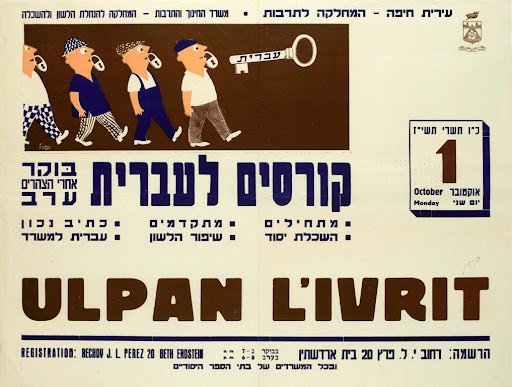 |
| Hebrew Language Day |
Date: Begins sunset Monday, 20 January 2025 - Ends evening Tuesday, 21 January, 2025
Hebrew Language Day (Yom HaIvrit) celebrates the Hebrew language and its revival. It is observed on the 21st of Tevet, the birthday of Eliezer Ben-Yehuda, who played a significant role in the revival of Hebrew as a modern spoken language.
How to celebrate:
Educational Activities: Schools and educational institutions conduct special programs and activities to promote the Hebrew language.
Public Lectures and Events: Lectures, readings, and cultural events focusing on Hebrew literature, poetry, and language are held.
Media Campaigns: Media outlets often feature programs and articles celebrating the richness and history of the Hebrew language.
2. Yom Hashoah (Holocaust Remembrance Day)
Date: Begins sunset Wednesday, April 23, 2025 - Ends evening Thursday, April 24, 2025
Yom Hashoah, or Holocaust Remembrance Day, is observed on the 27th of Nisan to commemorate the six million Jews who perished in the Holocaust. It is a day of reflection and mourning.
How to celebrate:
• Ceremonies and Memorials: Official state ceremonies and local memorial events are held in Israel and around the world.
• Moments of Silence: In Israel, a siren sounds, and people observe a moment of silence while standing in respect.
• Educational Programs: Schools, synagogues, and community centers organize educational programs, including survivor testimonies, films, and lectures.
3. Yom Hazikaron (Israel’s Memorial Day)
Date: Begins sunset Tuesday, April 29, 2025 - Ends evening Wednesday, April 30, 2025
Yom Hazikaron, or Israel’s Memorial Day, is observed on the 4th of Iyar to honor Israeli soldiers who have fallen in battle and victims of terrorism.
How to celebrate:
• Memorial Services: Ceremonies are held at military cemeteries, schools, and public spaces.
• Siren: A two-minute siren sounds in the evening and the morning, during which the entire country comes to a standstill.
• Remembrance Events: Community events and educational programs focus on remembrance and the stories of the fallen.
4. Yom Ha’atzmaut (Israel’s Independence Day)
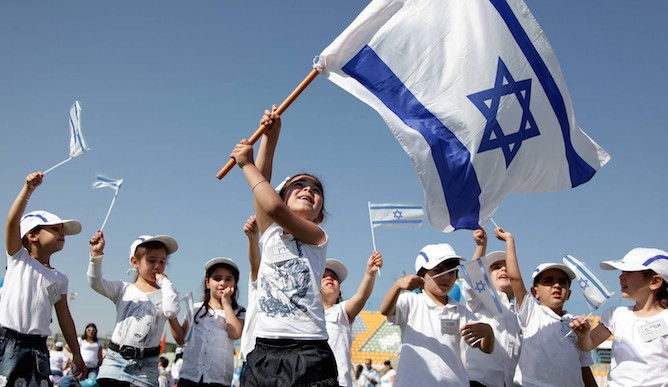 |
| Yom Ha’atzmaut |
Date: Begins sunset Friday, May 2, 2025 - Ends evening Saturday, May 3, 2025
Yom Ha’atzmaut, or Israel’s Independence Day, is celebrated on the 5th of Iyar, the anniversary of the establishment of the State of Israel in 1948.
How to celebrate:
• Festive Events: Parades, fireworks, concerts, and public celebrations take place throughout the country.
• Ceremonial Lighting of Torches: A central ceremony at Mount Herzl includes the lighting of 12 torches representing the 12 tribes of Israel.
• Picnics and Barbecues: Families and friends gather for outdoor meals, a popular way to celebrate the holiday.
Read More: Top 20+ Weirdest Things in Israel
5. Yom Yerushalayim (Jerusalem Day)
Date: Begins sunset Sunday, May 25, 2025 - Ends evening Monday, May 26, 2025
Yom Yerushalayim, or Jerusalem Day, is observed on the 28th of Iyar to commemorate the reunification of Jerusalem during the Six-Day War in 1967.
How to celebrate:
• Ceremonies: Official ceremonies and events take place in Jerusalem.
• Parades: The Jerusalem Day Flag Parade through the city streets is a central event.
• Prayers and Services: Special prayers of thanksgiving are recited in synagogues.
6. Herzl Day
Date: Begins sunset Wednesday, 7 May, 2025 - Ends evening Thursday, 8 May, 2025
Herzl Day, observed on the 10th of Iyar, honors Theodor Herzl, the founder of modern political Zionism.
How to celebrate:
• Educational Activities: Schools and institutions focus on Herzl's contributions to the establishment of the State of Israel.
• Commemorative Events: Public events and ceremonies highlight Herzl’s legacy and vision.
7. Jabotinsky Day
Date: Begins sunset 24 July, 2025 - Ends evening 25 July, 2025
Jabotinsky Day, observed on the 29th of Tammuz, commemorates the life and legacy of Ze'ev Jabotinsky, a leader of Revisionist Zionism.
How to celebrate:
• Educational Programs: Schools and organizations highlight Jabotinsky’s contributions to Zionism and his ideological legacy.
• Commemorative Events: Public ceremonies and discussions focus on his impact and writings.
8. Yitzhak Rabin Memorial Day
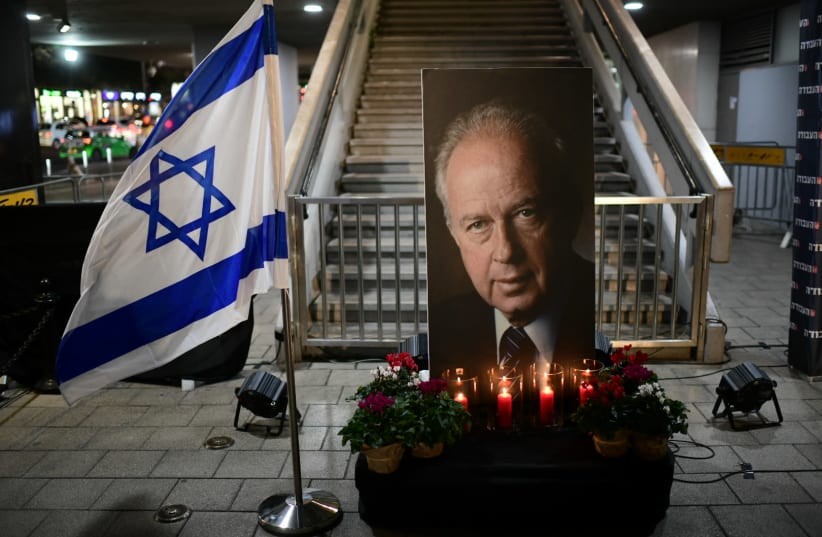 |
| Yitzhak Rabin Memorial Day |
Date: Begins sunset 2 November, 2025 - Ends evening 3 November, 2025
Yitzhak Rabin Memorial Day, observed on the 12th of Cheshvan, marks the anniversary of the assassination of Yitzhak Rabin, the Israeli Prime Minister who was a key figure in the Israeli-Palestinian peace process.
How to celebrate:
• Memorial Ceremonies: Official state ceremonies and local memorial events are held to honor Rabin’s memory and legacy.
• Educational Programs: Schools and community centers focus on Rabin’s life, contributions to peace, and the lessons from his assassination.
9. Sigd
Date: Begins sunset 19 November, 2025 - Ends evening 20 November, 2025
Sigd is a holiday celebrated by Ethiopian Jews (Beta Israel) on the 29th of Cheshvan. It commemorates the giving of the Torah and the community's yearning for Zion and Jerusalem.
How to celebrate:
• Gatherings: Ethiopian Jewish communities gather on hilltops or in community centers for prayers and readings from the Torah.
• Fasting and Festivities: The day involves fasting until midday, followed by festive meals.
• Educational and Cultural Programs: Events focus on the heritage and traditions of Ethiopian Jews.
10. Ben-Gurion Day
Date: Begins sunset 25 November, 2025 - Ends evening 26 November, 2025
Ben-Gurion Day, observed on the 6th of Kislev, honors David Ben-Gurion, Israel’s first Prime Minister and a major figure in the establishment of the State of Israel.
How to celebrate:
→ Educational Activities: Schools and institutions conduct programs on Ben-Gurion’s contributions to the state and his vision.
→ Commemorative Events: Public ceremonies and events highlight Ben-Gurion’s legacy and leadership.
Special Shabbatot in the Jewish Calendar 2025
1. Shabbat Shirah
Date: sunset - nightfall
2. Shabbat Shekalim
Date: sunset - nightfall
3. Shabbat Zachor
Date: sunset - nightfall
4. Shabbat Parah
Date: sunset - nightfall
5. Shabbat HaChodesh
Date: sunset - nightfall
6. Shabbat HaGadol
Date: sunset - nightfall
7. Shabbat Chazo
Date: sunset - nightfall
8. Shabbat Nachamu
Date: sunset - nightfall
9. Shabbat Shuva
Date: sunset - nightfall
Rosh Chodesh in the Jewish Calendar 2025
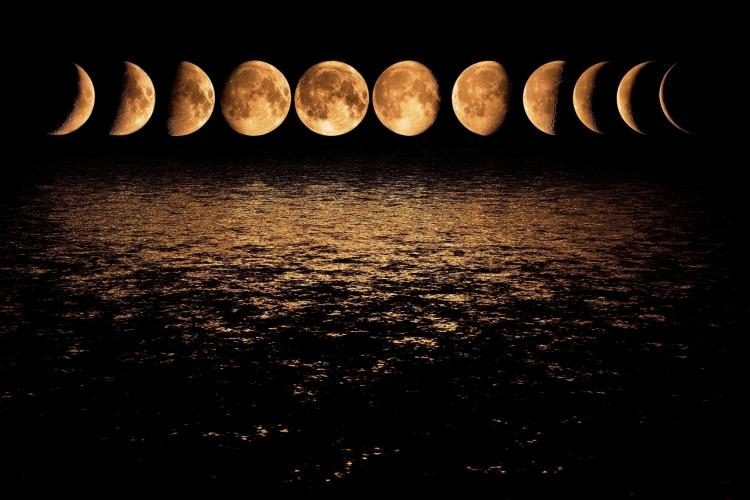 |
| Rosh Chodesh |
Rosh Chodesh, which translates to "Head of the Month," is the celebration of the beginning of a new month in the Jewish calendar. It is marked by the appearance of the new moon and has both religious and cultural significance. Rosh Chodesh is considered a minor holiday, and its observance includes special prayers, additional Torah readings, and, for some, festive meals.
Rosh Chodesh serves as a time of renewal and reflection, aligning with the renewal of the moon. It is an opportunity for spiritual rejuvenation, setting intentions, and connecting with the rhythms of the Jewish calendar. Its regular monthly occurrence provides a structured way to mark time and celebrate the continuous cycle of months in the Jewish year.
Rosh Chodesh occurs at the start of each month in the Jewish calendar. Here are the dates for Rosh Chodesh in the Jewish year 5785, which corresponds to 2025:
• Tishrei: Not typically observed separately, as it coincides with Rosh Hashanah.
• Cheshvan: October 31, 2024 (Begins the evening before)
• Kislev: November 29-30, 2024 (Two days observance)
• Tevet: December 29, 2024
• Shevat: January 28, 2025
• Adar (Adar I in leap years): February 26-27, 2025 (Two days observance)
• Adar II (in leap years): March 27-28, 2025 (Two days observance)
• Nisan: April 25, 2025
• Iyar: May 25-26, 2025 (Two days observance)
• Sivan: June 24, 2025
• Tammuz: July 23, 2025
• Av: August 22, 2025
• Elul: September 20-21, 2025 (Two days observance)
Observance of Rosh Chodesh
Prayers: On Rosh Chodesh, additional prayers are added to the regular daily prayers, including the Hallel (a series of psalms of praise) and a special Musaf (additional) prayer.
Torah Reading: There is a special Torah reading that corresponds to Rosh Chodesh.
Women's Observance: Traditionally, Rosh Chodesh has a special significance for Jewish women, and some women refrain from certain types of work as a mark of honor.
Who Uses the Jewish Calendar?Jewish Communities WorldwideThe primary users of the Jewish calendar are Jewish communities around the world. It governs the timing of religious observances, holidays, and life cycle events such as weddings and bar/bat mitzvahs. Religious InstitutionsSynagogues, Jewish schools, and other religious institutions use the Jewish calendar to schedule services, events, and educational programs. IsraelIn Israel, the Jewish calendar is used alongside the Gregorian calendar for official purposes. Jewish holidays are national holidays in Israel, and the Jewish calendar influences public life significantly. Cultural ObserversEven those who may not be religiously observant often use the Jewish calendar for cultural and familial reasons, participating in holiday celebrations and traditions. |
Conclusion
The Jewish calendar in 2025 is filled with opportunities for spiritual growth, community bonding, and cultural celebration. Each holiday and observance is rich with history and tradition, offering moments for Jews around the world to connect with their faith and heritage.
Whether through solemn reflection on Yom Kippur, joyous festivities on Purim, or the light of Hanukkah, these dates provide a profound tapestry of Jewish life and identity.
 2025 Calendar for Asian Countries with the Public Holidays 2025 Calendar for Asian Countries with the Public Holidays Check out the Calendar 2025 for Every Asian Country or Territory with the Public Holidays. |
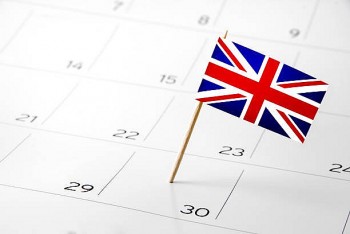 2025 UK Calendar - Full List of Public Holidays And Observances: Dates and Celebrations 2025 UK Calendar - Full List of Public Holidays And Observances: Dates and Celebrations Whether you are planning a vacation, organizing events, or simply looking to make the most of your time off, this comprehensive guide provides all the ... |
 2025 Canada Calendar - Full List of Public Holidays And Observances: Dates and Celebrations 2025 Canada Calendar - Full List of Public Holidays And Observances: Dates and Celebrations Let's explore the 2025 Canada Calendar for a complete list of national and regional holidays, festivals, and observances, including dates and celebrations. |



